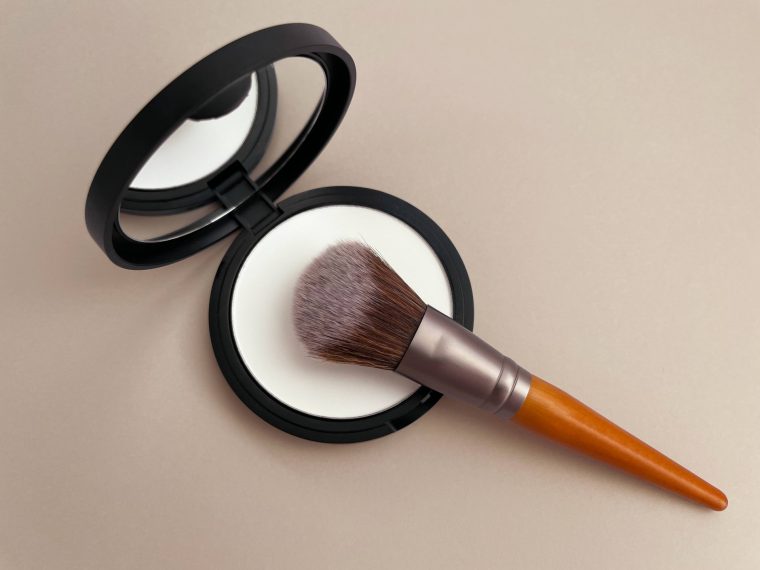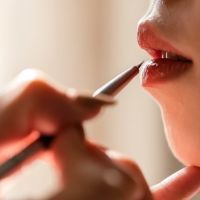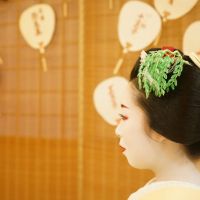The 5 steps in the Makeup Process of Geisha
Mayu Inayama
Latest posts by Mayu Inayama (see all)
- UTAGE KAIGAI ~The best dinner with Geisha in Kyoto~ - 2023/12/17
- The 5 steps in the Makeup Process of Geisha - 2023/11/29
- Special dinner with Geisha in Kyoto - 2023/11/14
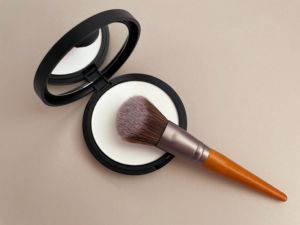
The word “geisha” probably conjures up images of beautiful women in white makeup.
This special makeup featuring the colors white, black, and red is still a valuable part of Japanese culture today and has been cherished for centuries.
In this article, we will explain the history, procedures and tools involved in “geisha makeup”.
Contents
Geisha make up procedures
Geisha basically do their own makeup every day. It takes 30 minutes for a seasoned geisha and nearly an hour for a newcomer. As a rule only three colors of makeup should be used: white, red, and black, and colorful colors are not allowed. This may seem like a simple task, but it requires carefulness and precision, and geisha aim to apply their makeup carefully and beautifully.
The culture of geisha has continued since the Edo period. In the old days, there was no electricity or lights like today, and when it was dark at night, there was only candlelight. To make their faces clearly visible at tea ceremonies in such dark environments, geisha wore a distinctive makeup called shiro-nuri, in which they painted their faces white to make them appear brighter. This marked the beginning of geisha makeup.
There is also a theory suggesting that geishas used to wear white makeup because the Japanese culture had long believed that white skin is beautiful.
Even today, the culture of geisha makeup is still cherished.
There are five main steps involve in geisha makeup: foundation, white makeup, eyeliner, eyebrows, and lipstick. There are many differences from modern makeup, making all parts are interesting.
①Foundation
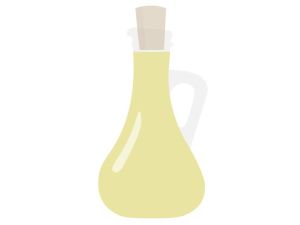
First, they wash their face.
Once the face is washed, it is time to apply the base coat. Geishas use “Bintsuke abura” (an oil which is explained in the next chapter) as a foundation. Since most of this oil is solid, they can soften it with the temperature of the palm of their hand, and then apply it to the face and neck. The trick is to be able to grasp the right amount of oil to apply, since too much application of the “Bintsuke-abura” may cause the next application of white powder to smear.
②White makeup
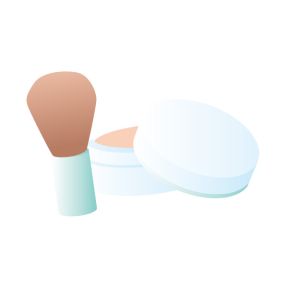
Next, a white coating is applied. White coating is similar to what we now call foundation. First, “Neri oshiroi” (a white powder which is explained in the next chapter) is dissolved in water. Then, the powder is applied with a flat-tipped brush called a board brush. After applying the white powder, they blend it onto the face with a puff.
There are two places in which they apply white paint: the entire face and the collar area.
There are two ways to paint the collar and feet area: with two-stripes and three stripes.
③Eyeliner
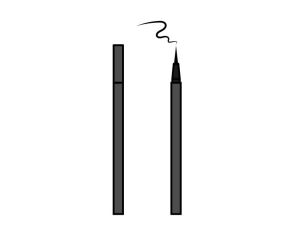
The third step is eyeliner.
Eyeliner plays an important role in defining the features and impression of the eyes, and is carefully drawn by the geisha. For red eyeliner, they dissolve “Boubeni” (a red lipstick which is explained in the next chapter) in water and apply it.
Many maiko (apprentice geisha) add red to their eyes, and eyebrows with a little bit of black at the end to create a subtle childlike look.
④Eyebrows
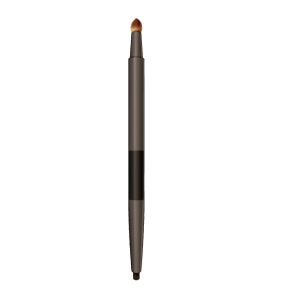
The fourth step is to draw the eyebrows.
Eyebrows are drawn using a brush. The color can be reddish or blackish, depending on the person.
⑤Lipstick
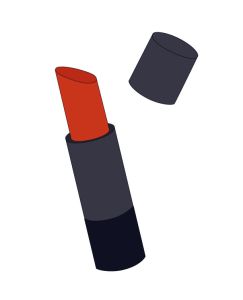
Finally, lipstick is applied to complete the makeup.
Lipstick, like eyeliner, is applied by dissolving a stick of rouge in water. Sometimes, to prevent roughness and to make the lips glossy, a piece of melted candy is applied on top of the lipstick.
Maiko, who are apprentices to geisha, apply lipstick only to their lower lips for the first year.
To learn more about the makeup process, check out this video from the Let’s Ask Shogo channel↓
I also recommend the Discover Kyoto channel for a 5-minute video of maiko getting ready!↓
Make up tools of geisha
In the previous chapter, I described the makeup procedures of geisha, which included several special makeup tools unique to Japan. In this chapter, I will introduce in detail three makeup tools: “Bintsuke abura” “Neri oshiroi” and “Boubeni”.
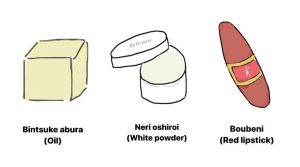
①Bintsuke abura(oil)
Bintsuke abura” is based on “mokuro,” which is extracted from haze and poison ivy.
Because it is a natural plant ingredient, its hardness and texture may vary depending on ambient temperature conditions, such as air temperature.
Bintsuke abura has been used in Japan since ancient times, also used as a hair conditioner. However, it can also be applied directly to the face as a primer to prevent makeup from smudging. Bintsuke abura is what keeps geisha’s special makeup in place.
Bintsuke abura also has a moisturizing effect and plays an important role in preventing rough skin for geisha who wear white powder every day.
Picture of Bintsuke abura↓
https://www.instagram.com/p/CsVtrA9vvS4/?utm_source=ig_web_copy_link&igshid=ODhhZWM5NmIwOQ==
②Neri oshiroi(white powder)
Neri oshiroi is made by mixing white powder and oil or kneading glycerin and white powder together. It is similar to foundation today, and is used for thick makeup and collar makeup in “kabuki” and “nihon buyo (traditional Japanese dance performances)”.
Picture of Neri oshiroi↓
https://www.instagram.com/p/BuUznCHBeDd/?utm_source=ig_web_copy_link&igshid=ODhhZWM5NmIwOQ==
③Boubeni(red lipstick)
Boubeni is a stick-type lipstick made of gum arabic and pigments, etc., which is dissolved in water. It was widely used in Japan mainly in the early Showa period.
It is also characterized by the fact that it does not have a container like today’s lipsticks.
Picture of Boubeni↓
https://www.instagram.com/p/CifNzD4JFQf/?utm_source=ig_web_copy_link&igshid=ODhhZWM5NmIwOQ==
History of geisha make up
As mentioned in the previous paragraph, geisha culture was born in Kyoto during the Edo period. It was also during the Edo period that the general public became familiar with make up. At that time, status order was important in society, and make-up was one of the social norms that indicated class, marital status, and so on. Under these circumstances, geisha also began to express their childishness, maturity and beauty through make up.
The Meiji era also saw the emergence of an awareness of skin care for clean skin. The custom of washing also became widespread, and bran was commonly used as a facial cleanser. Lotion was often handmade at home, and “loofah water” and “cucumber water” were made using familiar plants.
A video on the history of geisha↓
Make up changes from maiko to geisha
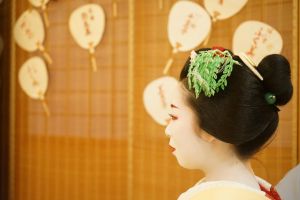
In Japan, apprentice geisha are called maiko, and the appearance of their makeup changes as a maiko becomes a geisha to look more mature.
There are three main differences between the makeup of maiko and geisha. First, maiko are expected to wear childish makeup, while geisha are expected to wear more mature makeup. Second, new maiko apply lipstick only to their lower lip. Third, compared to maiko, geisha draw their eyeliner and eyebrows more clearly and apply lipstick in darker shades.
Maiko and geisha use different kinds of makeup to express their own personal style. It is also important to find makeup that suits them, and they go through a trial-and-error process in front of the mirror in daily preparation.
Conclusion
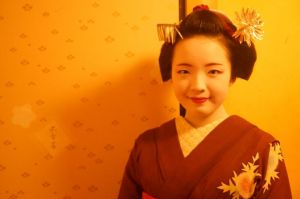
I have introduced various aspects of geisha makeup.
You can see that a lot of ingenuity goes into the makeup of geisha, from the tools they use to the methods they use. It is also interesting to note that each geisha comes up with a makeup style that suits her own face.
I hope the culture of geisha makeup that started in the Edo period will continue in the future.
Thank you for reading this article to the end.

